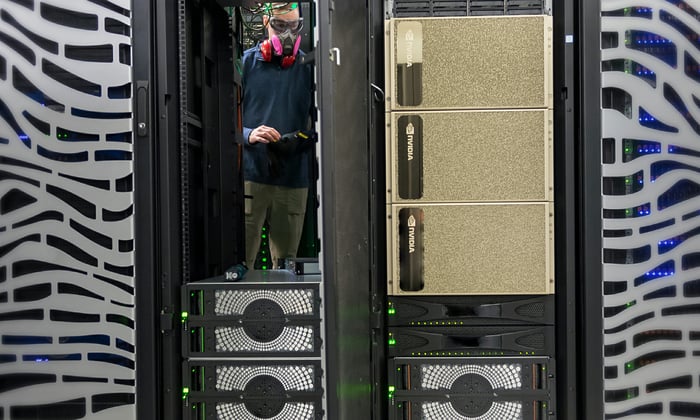Dollar Index Recovers Amid Stock Selloff, Key Economic Reports Ahead
The dollar index (DXY00) gained ground on Monday, recovering from early losses and finishing up by +0.18%. Short-covering in the dollar followed a sharp selloff in stocks, which increased liquidity demand for the currency.
Initial Dollar Decline Linked to Tariff Concerns
On Monday, the dollar started lower due to worries about the detrimental effects of US tariffs on the economy. Additionally, President Trump’s comments from Sunday further pressured the dollar as he indicated the US economy is undergoing “a period of transition” related to his tariff policies. The drop in T-note yields also contributed to reduced interest rate differentials, further weakening the dollar.
Upcoming Economic Data and Trade Policy Focus
This week, market participants will keep an eye on Wednesday’s February US CPI report, expected to decline slightly to +2.9% year-over-year from +3.0% in January. The core CPI is forecasted to ease to +3.2% year-over-year from January’s +3.3%. Furthermore, US trade policies will be scrutinized as the implementation of 25% tariffs on steel and aluminum imports is set for Wednesday. On Thursday, the February final-demand PPI is anticipated to fall to +3.2% year-over-year from +3.5% in January. The week will conclude with the University of Michigan’s March consumer sentiment index expected to drop -1.2 to 63.5. Additionally, attention will be on Congress’s efforts to pass a spending bill to avoid a government shutdown by the March 15 deadline.
Currently, markets are assessing a 7% probability for a -25 basis point rate cut at the next FOMC meeting scheduled for March 18-19.
Eurozone Economic Indicators and ECB Outlook
EUR/USD (^EURUSD) fell by -0.10% on Monday after the euro initially rose on better-than-expected European confidence and industrial production reports. However, gains were reversed as the dollar rebounded. Notably, ECB Governing Council member Kazimir’s hawkish remarks regarding inflation risks contributed to the dollar’s strength.
The Eurozone’s March Sentix investor confidence index increased by +9.8 to a nine-month high of -2.9, surpassing expectations of -9.3.
Mixed Trade Data from Germany
In Germany, January’s industrial production rose by +2.0% month-over-month, outperforming the +1.5% consensus expectation and marking the largest increase in five months. However, trade data presented a mixed picture as January exports unexpectedly decreased by -2.5% month-over-month, contrary to a +0.5% anticipated rise, marking the biggest drop in eight months. Imports, on the other hand, increased by +1.2% month-over-month, better than the +0.5% expected.
Kazimir emphasized the need for the ECB to remain alert to potential inflation risks, with swaps currently pricing in a 51% chance of a -25 basis point rate cut at the policy meeting on April 17.
Japanese Yen Strengthens Amid Wage Pressure
USD/JPY (^USDJPY) dropped by -0.53% on Monday, as the yen surged to a five-month high against the dollar. Strong indicators of Japanese wage pressure are increasingly supportive of hawkish Bank of Japan (BOJ) policies, pushing the 10-year JGB bond yield to a 16-year high of 1.584%. This elevated yield bolstered the yen’s appeal.
Additionally, T-note yield declines and safe-haven demands due to falling US stocks added to the yen’s strength. Japan’s January leading index CI rose by +0.1 to 108.0, slightly missing expectations of 108.2. The February eco watchers outlook survey fell -1.4 to a nine-month low of 46.6, lower than the anticipated 47.5.
Japan’s full-time base pay in January rose by +3.0% year-over-year, exceeding expectations of +2.9% and marking the largest increase in 32 years.
Precious Metals Prices Decline Amid Market Dynamics
April gold (GCJ25) closed down -14.70 (-0.50%), while May silver (SIK25) ended the day down -0.279 (-0.85%). Precious metals prices saw a moderate decline, influenced by hawkish remarks from Kazimir, which suggested ongoing vigilance regarding inflation risks. Additionally, falling inflation expectations hampered demand for gold as a hedge, following a drop in the US 10-year breakeven inflation rate to a 2-1/4 month low of 2.311%.
Silver prices faced pressure as weaker-than-expected February CPI and PPI reports from China indicated sluggish demand in the economy, negatively impacting prospects for industrial metal demand. Broader economic concerns, particularly related to US tariffs, also dampened metal prices, which reached their lows as the dollar gained strength.
Despite some pressure, precious metals found support from declining T-note yields and a boost from safe-haven demand resulting from the equity selloff. Furthermore, fund buying has supported gold prices, with long positions in ETFs reaching a 15-month high last Friday.
Concerns over weak demand in China are hindering prices and posing risks to global growth and industrial metal demand. February’s CPI in China dropped -0.7% year-over-year, underperforming the expected -0.4%, marking the largest decline in 13 months. The January PPI also fell -2.2% year-over-year, against an expectation of -2.1%.
On the date of publication, Rich Asplund did not have (either directly or indirectly) positions in any of the securities mentioned in this article. All information and data in this article are solely for informational purposes. For more information, please view the Barchart Disclosure Policy here.
More news from Barchart
The views and opinions expressed herein are those of the author and do not necessarily reflect those of Nasdaq, Inc.






